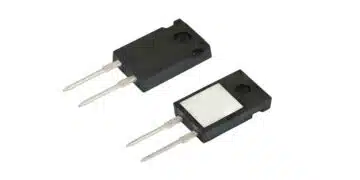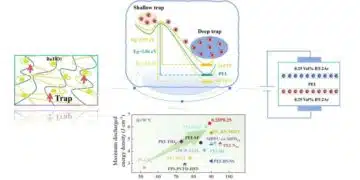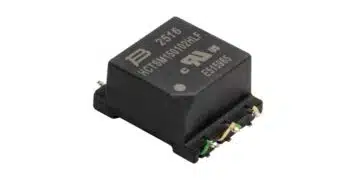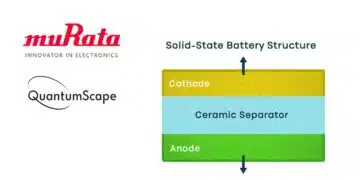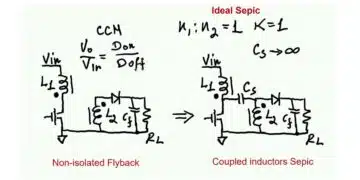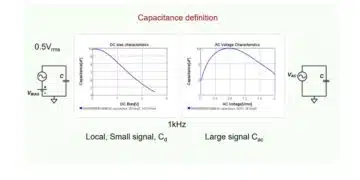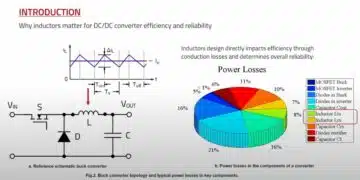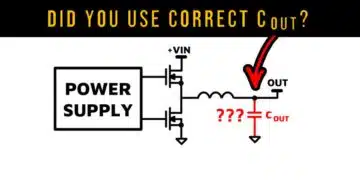source: EPCI
Tomas Zednicek, EPCI president had interviewed Mark Gresko, Senior Principal Component Engineer, Medtronic PLC about his view on passive components needs & trends in medical applications.
EPCI:
Hello Mark, thank you to accept invitation from EPCI to introduce your views on current use of passive components in your segment and your views on needs in this industry for future. Can you please briefly introduce your position and expertise?
Mark: During my 29 years with Medtronic I had the opportunity to work in several different areas from product development, manufacturing and test to world-wide production and distribution. Medtronic’s mission to deliver unsurpassed quality products to our customers, require working and focusing on many details. Over the years, I have developed a passion for perfection, which guides me in every day’s work in my current role as a Component engineer.
Medtronic uses millions of discrete capacitors to build hybrid circuits for implantable devices. The three major categories are Cardiac stimulators i.e. Pacemakers, Implantable Defibrillators and Neurological devices. All of these applications require proven high reliability components. As a component engineer my responsibility entails two major aspects. First, to maintain the quality and reliability of existing components used in current production. Second, developing new components for future designs, provide adequate testing to demonstrate the acceptable performance and reliability. Both aspects require a good working relationship with the supplier(s), providing timely feedback on issues discovered during Characterization and Qualification process. Developing corrective actions and provide solutions to complex problems.
EPCI: What has been your favorite passive components used today and what are the top issues, missing spec/services, challenges etc in your application?
Mark: In recent years I have been specifically focusing on implantable, medical grade capacitors. The top 13 capacitor manufacturers generate about $20B annual revenue, of various, mostly commercial capacitors. The implantable capacitors are all surface mounted, either Tantalum (solid MnO2) or MLCC. Therefore, the implantable applications represent just a fraction the total annual sales and not every manufacturer participate in this business. Due to a strict regulatory environment, the components manufactured for implantable applications require full lot traceability, process controls, process change notifications, record retention for 10-15 years etc.
The electrical parameters requirements have often custom limits, specifically the DC leakage requirements are much tighter compared to commercial specification. The presence of impurities in the Ta2O5 dielectric layer could result in elevated leakage currents, instability or component failure. Tantalum capacitors are burned-in to activate the “weaker” parts and remove them from the population at test. The historical pass/fail testing was replaced by statistical screening methods at the supplier. Tantalum capacitors conditioned by this process exhibit low and stable DC leakages suitable for implantable hybrid circuits. Many suppliers would like to participate in medical implantable market, but only few have made the necessary commitment and investments to support this cause. Simply screening commercial grade components cannot guarantee the performance, reliability or supply continuity.
The MLCC are also burned-in but the failure mechanism is very different. Instead of unstable leakages, or insulation resistance, the weak parts fail short during burn-in process. Failed parts are simply removed by test.
Significant progress was made in recent years to produce defect free, thin dielectric layers. The ceramic tape cast in cleanrooms has very low defect density. Capacitors are manufactured with hundreds of layers with great performance and reliability. The legacy Burn-in type screening is still in place, but overvoltage testing seems to be a plausible alternative to remove defective parts. Initial testing is producing very favorable results. There is a great opportunity to prove this concept, but the testing needs to be performed with many lots, large sample sizes and over period of time.
EPCI: Can you imagine the roadmap for passive components in next five year and beyond in your application?
Mark: Recent introduction of the silicon trench capacitors PICS (Passive Integration and Connecting Substrate) provide unique opportunity to make very thin capacitors, suitable for integration into die stacks. The technology also provides an opportunity of integrating several capacitors onto one silicone chip, creating system’s capacitor arrays. As long as appropriate de-rating is applied from rated voltage the DC leakages are very low. However, due to relatively low dielectric constant the technology at this point is limited to low to mid-range capacitors.
The tantalum capacitor manufacturers are working with higher quality tantalum powders and implementing statistical screening methods to produce capacitors with low and stable leakages. The future opportunity lies in higher CV powders, that result in significant case size reduction, i.e. miniaturization. By improving the manufacturing processes, the increased yields would ultimately lead to cost reduction, since tantalum capacitors are relatively expensive. On the packaging side, the traditional lead- frame technology is being replaced by volumetrically efficient direct pellet encapsulation, without a traditional lead-frame. Solid MnO2 tantalum capacitors will continue to be a good choice for all implantable applications requiring high capacitance.
Significant quality improvements in dielectric layer, i.e., defect reduction, and the capacitance range expansion make the MLCC capacitor excellent choice for all AC applications in mid capacitance range. The less aggressive automotive designs with additional screening seem to be very good fit for high reliability medical implantable applications.
All three technologies mention above have their advantages and disadvantages, however all three are equally important to meet the capacitor’s needs for implantable hybrid circuits. The continuous improvement, increased manufacturing consistency, of each technology will serve the medical market well for several years. The PICS capacitors will play more significant role as the capacitance per surface unit increases, which will allow additional capacitor integration onto single array.
Among possible new technologies there is ongoing experimental work with the Screen Printed (paste) tantalum capacitors and Carbon Based Super Capacitors (LASER scribed graphene) which provides high power and energy densities. However, the technologies would not be usable for implantable applications if the increased power or energy densities are at the expense of DC leakage.
EPCI: Thank you Mark for your time, and willingness to share your views with us.
Important note: Mark Gresko is speaking at the next ESA Space Passive Component Days 12-14 October 2016 at ESA,ESTEC, Netherlands, http://www.congrexprojects.com/SPCD2016 , where you can meet him and hear his presentation “Capacitors for ultra-low power hybrid circuits”.
about Mr. Mark Gresko
Mark Gresko performed his graduation work in Microelectronics at the Slovak Technical University in Bratislava (MSEE 1982). He immigrated to United States in 1983 and worked on Small signal / RF transistors and Silicone Sensor at Motorola until 1987. After he joined Medtronic, he moved on to the business studies at American Graduate School of International Management (Thunderbird) in Glendale, AZ and graduated in 1993 with an MBA. After seven years in engineering roles at Medtronic he became a product engineering manager for next ten years. In this role he was involved in new product development as well as manufacturing. Tempe facility manufactures all implantable hybrid circuits for Medtronic. In his current role he is focusing on capacitor technologies and component reliability.




